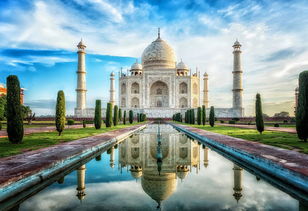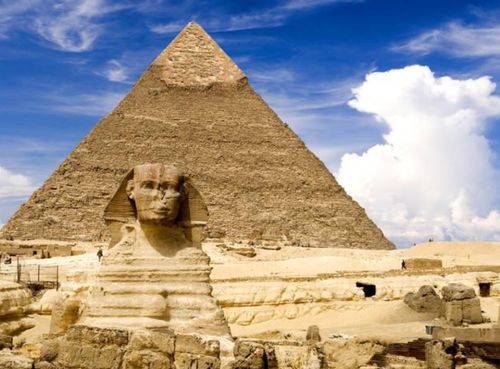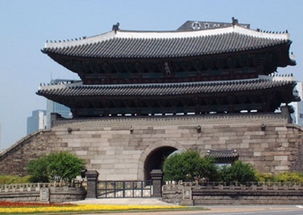Exploring the Wonders of 'Famous Scenic Spots and Historic Sites
“Scenic Spots and Historic Sites” in English

Scenic spots and historic sites are the cultural treasures and natural wonders that dot the globe, serving as timeless witnesses to human history and the evolution of nature. These places, whether ancient ruins, breathtaking landscapes, or awe-inspiring monuments, hold a special fascination for people from all walks of life. They are not just tourist attractions; they are bridges connecting the past and the present, offering insights into different cultures, civilizations, and natural phenomena.

In English, the term "scenic spots and historic sites" can be translated as "places of scenic beauty and historic interest." This phrase encapsulates the dual appeal of these locations: their visual and aesthetic allure, as well as their historical and cultural significance.

When one thinks of scenic spots, images of towering mountains, crystal-clear lakes, lush forests, and pristine beaches come to mind. These natural wonders are often referred to as "nature's treasures" and attract millions of visitors each year. From the majestic Grand Canyon in the United States to the serene Lake Baikal in Russia, nature has bestowed upon us a plethora of breathtaking landscapes that leave us in awe and inspire a sense of reverence for the environment.
But scenic spots are not limited to natural wonders. They can also include man-made structures that harmonize seamlessly with their natural surroundings. The Great Wall of China, for instance, stretches across vast landscapes, connecting mountains, deserts, and plains in a mesmerizing display of human ingenuity and perseverance. Similarly, the Taj Mahal in India, a mausoleum of unparalleled beauty, stands as a testament to love and architectural brilliance, commanding respect and admiration from all who see it.
Historic sites, on the other hand, focus more on the human aspect of our past. These places are where significant events took place, where famous figures lived and worked, or where ancient civilizations thrived. They are the physical remnants of our collective history, serving as tangible links to the past.
Rome's Colosseum, for example, is a monumental structure that was once the centerpiece of Roman entertainment. It was here that gladiators fought, and emperors watched in splendor. Today, it stands as a symbol of Rome's imperial past, inviting visitors to imagine the roar of the crowd and the spectacle of the games.
Similarly, the Pyramids of Giza in Egypt are among the most famous historic sites in the world. These ancient structures, built as tombs for the Pharaohs, stand as a testament to the ingenuity and skill of the ancient Egyptians. Their immense size and intricate construction have fascinated people for thousands of years, inspiring countless theories and legends about their purpose and construction.
In addition to ancient ruins, historic sites can also include museums, palaces, and other buildings that house significant historical artifacts and collections. The Louvre Museum in Paris, for instance, is not just a showcase of French art and culture; it also houses some of the most famous works of art in the world, including the Mona Lisa by Leonardo da Vinci. Similarly, the British Museum in London holds a vast collection of artifacts from around the globe, reflecting the history and diversity of human civilization.
The appeal of scenic spots and historic sites lies in their ability to transport us to another time and place. They offer a unique perspective on the world, allowing us to see it through the eyes of those who lived before us. By visiting these places, we can gain a deeper understanding of our shared history and cultural heritage, fostering a sense of unity and appreciation for the diversity of human experience.
Moreover, scenic spots and historic sites play a crucial role in education and tourism. They are often the highlight of travel itineraries, drawing visitors from all over the world. Tourism, in turn, supports local economies and creates jobs, helping to preserve these valuable sites for future generations.
Educationally, these places serve as living classrooms where students can learn about history, culture, and the environment in a hands-on, experiential way. Field trips to historic sites and scenic spots can be a powerful tool for teaching, as they allow students to see and touch the past, making abstract concepts more concrete and memorable.
In recent years, there has been a growing emphasis on sustainable tourism and the preservation of scenic spots and historic sites. This includes efforts to minimize the environmental impact of tourism, protect cultural heritage, and ensure that these places remain accessible and enjoyable for all.
One way to promote sustainable tourism is through eco-friendly practices such as reducing waste, conserving water, and using renewable energy sources. Additionally, visitors can help preserve these sites by respecting local customs and regulations, staying on designated paths, and not taking souvenirs that could damage the environment or cultural artifacts.
In conclusion, scenic spots and historic sites are invaluable assets that enrich our lives and broaden our horizons. They offer a window into the past, allowing us to experience the wonders of nature and the
- 上一篇: 《文心雕龙》的作者是谁?
- 下一篇: 自制成型水的家庭秘籍
-
 常见的'the way'用法有哪些?资讯攻略10-25
常见的'the way'用法有哪些?资讯攻略10-25 -
 How do you say 'let it be' in English?资讯攻略11-04
How do you say 'let it be' in English?资讯攻略11-04 -
 The Art of Saying 'Where, Where' in English资讯攻略10-30
The Art of Saying 'Where, Where' in English资讯攻略10-30 -
 情人节浪漫英语表白语大全资讯攻略11-17
情人节浪漫英语表白语大全资讯攻略11-17 -
 篮球英文单词“Basketball”的含义是什么?资讯攻略11-16
篮球英文单词“Basketball”的含义是什么?资讯攻略11-16 -
 骨头的英文是什么?资讯攻略12-02
骨头的英文是什么?资讯攻略12-02












